Results 3,951 to 3,960 of 12094
Thread: Anandtech News
-
06-03-14, 02:35 AM #3951
Anandtech: HTC Hits a Lower Price with the One (E8)
Today, HTC announced the HTC One (E8), a phone that is effectively aimed at providing the One (M8) spec at a lower price point. While the phone doesn’t keep everything, all the key features are still present. The major changes are effectively a move from the Duocam 4MP+2MP camera module to a single 13MP module. Based upon the F/2.2 aperture of this module, it’s likely that this is the same module found in the One mini 2 with OmniVision’s OV13850 sensor. In addition, the materials are changed, with a new plastic unibody design. This is one of the more logical areas to cut costs, as while metal is good from an MD/ID perspective, the cost can easily be an order of magnitude greater than plastic designs.
HTC has also taken the right direction by making two colors with matte finish plastic (Maldives Blue and Misty Gray in the photo above), which can go a long way to improving in-hand feel of the phone. Realistically, matte finishes tend to look better in the long run as well, as glossy finishes have more obvious scratches and tend not to show oil streaks and similar patterns from use. Unfortunately, the one area where HTC cut too deep was the loss of 802.11ac WiFi capabilities, which means that this shares a WiFi module with the One mini 2. This is likely to be a Qualcomm WCN3660 part. I've put a table of the specs below to compare the E8 with the M8.
[TR="class: tlblue"]
[TD="width: 120"] [/TD]
[TD="width: 170, align: center"] HTC One (E8)[/TD]
[TD="width: 170, align: center"] HTC One (M8)[/TD]
[/TR]
[TR]
[TD="class: tlgrey"] SoC[/TD]
[TD="width: 170, align: center"] MSM8974ABv3 2.3 GHz Snapdragon 801[/TD]
[TD="width: 170, align: center"] MSM8974ABv3 2.3 GHz Snapdragon 801[/TD]
[/TR]
[TR]
[TD="class: tlgrey"] RAM/NAND[/TD]
[TD="width: 170, align: center"] 2GB LPDDR3, 16GB NAND + microSD[/TD]
[TD="width: 170, align: center"] 2GB LPDDR3, 16/32GB NAND + microSD[/TD]
[/TR]
[TR]
[TD="class: tlgrey"] Display[/TD]
[TD="width: 170, align: center"] 5” 1080p LCD[/TD]
[TD="width: 170, align: center"] 5” 1080p LCD[/TD]
[/TR]
[TR]
[TD="class: tlgrey"] Network[/TD]
[TD="width: 170, align: center"] 2G / 3G / 4G LTE (Qualcomm MDM9x25 UE Category 4 LTE)[/TD]
[TD="width: 170, align: center"] 2G / 3G / 4G LTE (Qualcomm MDM9x25 UE Category 4 LTE)[/TD]
[/TR]
[TR]
[TD="class: tlgrey"] Dimensions[/TD]
[TD="width: 170, align: center"] 146.42 x 70.67 x 9.85mm max, 145 grams[/TD]
[TD="width: 170, align: center"] 146.36 x 70.6 x 9.35mm max, 160 grams[/TD]
[/TR]
[TD="class: tlgrey"] Camera[/TD]
[TD="width: 170, align: center"] 13MP rear camera, 1.12 µm pixels, 1/3.06" CMOS size, OV13850, F/2.2. 5MP f/2.8 FFC[/TD]
4.0 MP (2688
More...
-
06-03-14, 07:31 AM #3952
Anandtech: Google Begins Android 4.4.3 Rollout
After initially posting factory images yesterday, Google has begun it's OTA rollout of its latest iteration of Android 4.4 KitKat. Android 4.4 launched in October last year alongside Google's newest smartphone, the Nexus 5. On the design front, Android 4.4 brought many refinements to the user interface by introducing the ability to enable translucency in areas such as the status bar and navigation buttons. In addition, the legacy blue parts of the interface like the status bar icons were replaced with more unified white elements. It also featured the new Google Experience Launcher which features much deeper Google Now integration with the ability to trigger voice search by saying “OK Google” on your homescreen.
Under the hood, Google brought about optimizations like ZRAM support which allows data for idle background applications to be stored in a compressed RAM partition to free up RAM for applications in use. A low-RAM API with more aggressive memory management to improve performance on devices with as little as 512MB of RAM was included as well. Google also introduced their new experimental Java runtime which they call ART. ART hopes to improve application performance over Android’s current Dalvik runtime, which uses just-in-time compilation, by using ahead-of-time compilation to compile Java bytecode into machine code at the time of install.
Shortly afterward, Google released version 4.4.1 and 4.4.2 which included substantial improvements to the Nexus 5 camera performance by focusing faster and having the camera software prefer faster shutter speeds. The algorithms for calculating white balance and color balance were also tweaked to address complaints about inaccurate color in captured images. Compatibility between the ART runtime and third party applications was also improved, along with many other bug fixes and security improvements.
Android 4.4.3 is mainly an update to fix outstanding bugs with Android Kitkat but there are a couple of tweaks to the user interface that come along with it as well.
One of the long awaited fixes of this release is for excessive battery drain that could occur when an application used a device’s camera as a result of a process called ‘mm-qcamera-daemon’ which controls the camera on Qualcomm-powered devices. After an app using the camera was closed the process would continue to run in the background and cause abnormally high CPU usage which resulted in increased battery drain and higher device temperatures than normal.
In terms of updates to the UI, Android 4.4.3 brings a new dialer application and changes to the people app. The new dialer features white keys with a different shade of blue that fits better with the overall design of KitKat itself. The black and turquoise of the dialer has seemed like a design outlier compared to Google's new applications for quite some time now and it's good to see Google continuing to unify the design of the Android OS. The new people application is mainly the same as its predecessor but it replaces the older grey contact photo icons for contacts you have not assigned a picture to with new colorful ones.
The update is currently known to be rolling out to Google's 2013 Nexus 7 with LTE, and it should reach other Nexus devices that support Android KitKat which includes the Nexus 4, Nexus 5, Nexus 7 (2012/2013 WiFi), and Nexus 10 shortly. Google Experience devices should receive their updates to Android 4.4.3 in the near future. Google is yet to post a summary changelog for the update and all the various bug and security fixes it includes but when it becomes available it will be added here. As always, Google’s update rollouts are done in stages and it may take some time for your device to receive it.
Source: Google Nexus 7 OTA via Android Police
More...
-
06-03-14, 10:00 AM #3953
Anandtech: Some Thoughts on Apple’s Metal API
Though it seems like Apple’s hardware divisions can hardly keep a secret these days due to the realities of mass production, the same is fortunately not true for their software divisions. Broad strokes aside, Apple managed to pack in a number of surprises in their OS X and iOS presentations at WWDC yesterday, and there’s nothing that ended up being quite as surprising to me as the announcement of the Metal API for iOS.
Later this week Apple will be holding their Metal developers sessions, at which time we’ll hopefully get some further details on the API and just how Apple intends to have developers use it. In the meantime with the preliminary Metal programming guide posted over on Apple’s developer website, I wanted to spend a few minutes musing over yesterday’s announcement, how Apple ended up developing their own API, and what this may mean for users and game developers.
Why Low-Overhead APIs?
First and foremost, let’s quickly recap just what exactly Apple has announced. Metal is Apple’s forthcoming low-overhead/low-level graphics and compute API for iOS. Metal is primarily geared towards gaming on iOS, and is intended to offer better graphics performance than the existing OpenGL ES API by curtailing driver overhead and giving developers more direct control over the GPU.
As our regular readers are no doubt well aware, Metal is the latest in a wave of low-level graphics APIs to be introduced over the last year in the GPU space, joining the ranks of AMD’s Mantle and Microsoft’s DirectX 12. In the case of Metal as, as has been the case of all of these APIs, the idea is rooted in the fact that while high level APIs provide a number of important features from libraries to hardware abstraction, the overhead from this functionality is not worth the benefits, especially in the hands of highly seasoned programmers who have the experience and the means to go close-to-metal and bang on the hardware directly. The situation facing developers in these cases is that at a time when GPU performance growth is rapidly outpacing CPU performance growth, the API and driver overhead has gone from problematic to intolerable, leading to developers wanting to access the hardware directly.
Metal in turn is the API through which Apple will provide this access. By peeling back the driver and API stack to the bare minimum, developers get to tell the GPU exactly what they’re doing and how they want it done, bypassing large chunks of CPU-intensive code that would previously do this for the developer. Whenever we’re talking about these low-level APIs it’s important to note that they’re merely ways to improve efficiency and are not miracle workers, but when faced with the most applicable bottleneck, the draw call – what’s essentially a single function call for the GPU – the increase in throughput can be remarkable. We won’t spend too much more time on the why’s of Metal, as we’ve written much longer outlines on low-level APIs before that don’t need repeated here, but it’s important to establish a baseline for evaluating Metal.
Are SoCs Draw Call Limited?
Upon hearing Apple’s Metal announcement, perhaps the greatest surprise was that iOS developers were in a position where they needed and could benefit from a low-level API like Metal. In the PC space we’ve been seeing low-level APIs rolled out as a solution to the widening gap between CPU and GPU performance, however the SoC class processors in Apple’s iOS devices are a very different beast. As one would expect for a mobile product, neither the CPU nor the GPU is high performance by PC standards, so why should a low-level API be necessary.
The answer to that is that while SoCs are lower performance devices, the same phenomena that has driven low-level APIs on the PC has driven them on mobile devices, just on a smaller scale. GPU performance is outgrowing CPU performance on the SoC level just as it has been the PC level, and even worse, SoC class CPUs are so slow that even small amounts of driver overhead can have a big impact. While we take 4000 draw calls for granted on desktop hardware – overhead and all – it’s something of a sobering reminder that this isn’t possible on even a relatively powerful SoC like the A7 with OpenGL ES, and that it took Metal for Crytek to get that many draw calls in motion, never mind other CPU savings such as precompiled shaders. If Apple intends to further gaming on iOS (and all signs are that they do), then capable programmers are going to want low level GPU access to maximize their graphical quality, the same as they do on the desktop and on game consoles.
Ecosystems & Portability
But on that note there’s quite a bit that goes into providing developers with these kinds of tools, which puts Apple in a very interesting position among hardware and OS vendors. Of the other low-level APIs we’ve seen so far – AMD’s Mantle and Microsoft’s DirectX 12 – the former is an API established by a hardware vendor who has to ride on top of other companies CPUs and OSes, and the latter is an OS vendor who has to ride on top of third party CPUs and GPUs. Apple on the other hand is in the enviable position of being as close as anyone can be to offering a fully vertical ecosystem. Apple designs their own CPUs, configures their own SoCs, and writes their own OS. The only portion of the chain that Apple doesn’t control is the GPU, and even then the company has exclusively used Imagination Technologies’ PowerVR GPUs for the last 7 years with no signs of this changing. So for all practical purposes Apple has a closed ecosystem that they control from top to bottom, and can design for accordingly.
A closed ecosystem in turn means that Apple can achieve a level of OS, hardware, and programming language integration that no one else can achieve. Metal doesn’t need to take into consideration any other GPU architectures (though Apple in all likelihood has left it generic enough to be portable if the situation arises) and the OS around it can be tailored to the API, rather than making the API fit within the confines of the OS. This doesn’t necessarily mean Apple is going to make significant use of this integration, but it will be interesting to see just what Apple does do with so much control.
Another interesting thing to see as Metal plays out is how Apple handles portability from OpenGL ES, that is if they try to handle it at all. On the whole, it’s accepted that a low-level API like Metal will have minimal portability from higher level languages such as OpenGL ES. The exception to this thus far has been that due to the fundamentally low level nature of shader programs, that shader programs have been more portable. In the case of AMD’s Mantle, for example, we have seen AMD specifically support DirectX’s shader language – HLSL – to make porting to Mantle easier. Shader programs are just one part of a bigger picture, but their growing complexity and low level nature means that there are still benefits to being able to port them among APIs even when the API commands themselves are not portable.
At least for the moment, Apple’s Metal programming guide makes no mention of porting from the existing OpenGL ES API. Looking at the Metal shader language and comparing it to the OpenGL ES shader language (GLSL ES), while it’s initially promising since both languages are based on C++, it’s also clear that for better or worse Apple hasn’t held back from eclipsing OpenGL ES here. Metal’s shader language is based on a newer version of C++, C++11, and consequently includes features not available in GLSL ES. Furthermore comparing the function libraries there are again a number of identical functions, and yet more functions that the two shader languages do not have in common. Portability out of Metal aside, it’s not at all clear whether GLSL ES shaders are meaningfully portable into Metal; if they aren’t then that means additional work for developers, a specific concern if Apple is trying to land console-like games for iOS devices. So it will be interesting to see how this plays out.
Of course Android portability is also going to raise a flag here, though at first glance it actually seems unlikely that this will be a concern. Without an equivalent API – and the OpenGL AZDO concept isn’t going to be fully applicable to OpenGL ES – the games that benefit the most from Metal are also the games least likely to be on Android, so while portability from Android looks far from easy, there also appears to be little need to handle it. Android portability would seem to be best handled by traditional porting methods using OpenGL ES, which retains its common API status and will be sufficient for the kinds of games that will run on both ecosystems.
Metal Computing
On a final note, while we’ve discussed graphics almost exclusively thus far, it’s interesting to note that Apple is pitching Metal as an API for GPU compute as well as graphics. Despite being one of the initial promoters of the OpenCL API, Apple has never implemented OpenCL or any other GPU compute API on iOS thus far, even after they adopted the compute-friendly PowerVR Rogue GPU for their A7 SoC. As a result GPU compute on iOS has been limited to what OpenGL ES can be coaxed into, which although not wholly incapable, it is an API designed for dealing with images as opposed to free form data.
The low-level nature of Metal on the other hand means that it’s a good (or at least better) fit for GPU computing, as the lack of abstraction for graphics makes it more capable of handling the workflows and data types of compute tasks. This is one area in particular where the Metal shader language being based on a subset of C++11 is a benefit to Apple, as it provides a solid foundation for writing compute kernels. None the less it remains to be seen just how adaptable Metal is – can it match the compute functionality of OpenCL 1.2 or even OpenGL 4.x compute shaders – but even if it’s only of limited use it means Apple is finally ready to approach GPU computing on iOS devices.
More...
-
06-03-14, 11:01 AM #3954
Anandtech: Computex 2014: SanDisk Announces Extreme Pro SSD
Continuing our Computex coverage, SanDisk is launching their new flagship Extreme Pro SSD today here in Taipei. SanDisk is targeting the enthusiast and professional crowd with the drive by promising the most consistent performance in a consumer-class SSD along with an industry-leading warranty of 10 years (!).
The Extreme Pro supports SanDisk's nCache Pro technology, which should be similar to SanDisk's regular nCache technology found in other drives but with more focus on consistency rather than peak performance.
SanDisk isn't disclosing the controller under the hood but given SanDisk's history with Marvell, I'm pretty confident that the controller is either Marvell 88SS9187 or 88SS9189. The NAND is SanDisk's 1Ynm, which in layman terms means SanDisk's/Toshiba's second generation 19nm node also known as A19nm.
The Extreme Pro will be available later this month through SanDisk's retail partners and the MSRPs are $189 for 240GB, $369 for 480GB and $599 for 960GB. We will be meeting with SanDisk here at Computex and are hoping to get more details, so stay tuned for updates!
More...
-
06-03-14, 11:01 AM #3955
Anandtech: Intel Keynote at Computex 2014: 14nm Core-M, SoFIA, Devil’s Canyon, DC P37
While we were unable to run a live blog of the Intel Keynote this year, there were still a number of interesting announcements made by Renée James, President of Intel. First job of a Keynote is to explain part of the past and the future, and we were told that the scope of the ‘Internet of Things’ is predicted to be in the region of 50 billion units by 2020. Intel’s specific focus in the semiconductor part of the equation Moore’s Law, and as a result they showed us the first device with a 14nm part, the ASUS Transformer T300 Chi that we saw yesterday at the ASUS Press Conference. Jonney Shih from ASUS was on the Intel stage showcasing the T300 Chi.
The heart of the 14nm processors is under the new Core-M branding. While clock speeds and core counts were not mentioned, the ‘Core’ part of the name means that this should be a Broadwell derived component. Echoing what CEO Brian Krzanich said earlier in the year, Renée confirmed that Core-M would be in the hands of end-users by the holiday season.
Also on show were tablets based on the Core-M technology, in the 10W range but also fanless.
As part of Intel’s LTE strategy, Mr Shih also demoed the ASUS Transformer Pad 303 with integrated LTE, showing HD streaming of a film.
Intel’s SoFIA platform, the combined quad-core Atom and 3G modem for entry and value markets, will be shipping in Q4. This is the primary purpose of the deal with Rockchip, with derivatives of SoFIA being sold by both parties. Intel’s strategy in this is to get into more markets more quickly and spread the brand.
As an enthusiast, news about Devil’s Canyon being launched was expected, and Intel delivered a brief statement regarding the top SKU having four cores at 4 GHz, as well as the Pentium Anniversary model. Details about these processors came through Intel’s PR channels, but we are still awaiting a retail date. Review samples should be with us when we get back from Computex.
Another element to the presentation was the official launch of the Intel DC P3700, an enterprise SSD for datacenters.
Intel also showed their RealSENSE camera - a camera with a 60 fps depth map sensor to allow interaction in real time. As part of the RealSENSE ecosystem, Intel is releasing an SDK kit with a camera and offering a $1m prize for the best app created with the device. It actually looks like an upgraded kinect sensor.
The onscreen demo of RealSENSE was a laptop with the camera installed and an avatar moving in real time. The software was programmed to track fifty different elements and muscles of the face, including the direction in which the eyes were looking.
Gallery: Intel Keynote at Computex 2014: 14nm Core-M, SoFIA, Devil’s Canyon, DC P3700 and RealSENSE
More...
-
06-03-14, 12:00 PM #3956
Anandtech: Computex 2014: Samsung Launches TLC-Based 845DC EVO for The Enterprise
While this is technically not a Computex announcement, Samsung is launching their TLC NAND based 845DC EVO today. This isn't Samsung's first TLC based enterprise SSD as a while ago they announced the PM853T but that drive is OEM only and is thus mostly limited to Samsung's large OEM customers, whereas the 845DC EVO will be available in retail for small and medium data center use.
Essentially, the 845DC EVO is just the retail version of the PM853T as everything from the NAND to the controller and firmware are similar. Samsung is only disclosing that the drive uses 10nm-class NAND, although I'm fairly certain that it's the same 19nm process as found inside the 840 EVO. I hate to admit that I don't know the exact controller inside the drive because PM853T was never sampled to media but I do have samples of the 845DC EVO, so once I get back from Taipei I will open up the drives and see what's inside.
I don't have the full data sheet yet but Samsung's press release mentions that the drive is capable of up to 530MB/s sequential read speeds and 87K IOPS random read, which are quite typical for a SATA 6Gbps drive. The endurance goes all the way to up to 600TB, so while that is not MLC level, it's still pretty good given that we are dealing with much lower endurance TLC NAND (e.g. the 800GB Micron M500DC does up to 1.9PB) and the drive is more geared towards the read-centric enterprise market (e.g. web servers).
The pricing is very competitive in the enterprise segment. The 845DC EVO will be available in capacities of 240GB, 480GB and 960GB with MSRPs of $250, $490 and $969 respectively. I'll be reviewing the drives in detail once I get back, so stay tuned for our in-depth review in a few weeks.
More...
-
06-03-14, 12:00 PM #3957
Anandtech: Ask the Experts: Krisztián Flautner VP of R&D, ARM
Late last year we did an installment of Ask the Experts with ARM's Peter Greenhalgh, lead architect for the Cortex A53. The whole thing went so well, in no small part to your awesome questions, that ARM is giving us direct access to a few more key folks over the coming months.
Krisztián Flautner is Vice President of Research and Development at ARM, and as you can guess - he's focused on not the near term, but what's coming down the road for ARM. ARM recently celebrated its 50 billionth CPU shipment via its partners, well Krisztián is more focused on the technologies that will drive the next 100 billion shipments.
Krisztián holds PhD, MSE and BSE degrees in computer science and engineering from the University of Michigan. He leads a global team that researches everything from circuits to processor/system architectures and even devices. And he's here to answer your questions.
If there's anything you want to ask the VP of R&D at ARM, this is your chance. Leave a comment with your question and Krisztián will go through and answer any he's able to answer. If you've got questions about process tech, Moore's Law, ARM's technology roadmap planning or pretty much anything about where ARM is going, ask away!
More...
-
06-03-14, 11:33 PM #3958
Anandtech: AMD Launches Mobile Kaveri APUs
A couple weeks back, AMD briefed us on their upcoming mobile Kaveri APUs. We've known for a while that mobile Kaveri was coming, and after five months the wait is over. Besides providing us with details of the new APU models, we were given some hands on time to run any benchmarks we wanted on a prototype Kaveri laptop. Read on to find out what to expect from mobile Kaveri, and whether it can help AMD gain some needed market share in the world of laptops.
More...
-
06-04-14, 12:31 AM #3959
Anandtech: Computex 2014: Update on SandForce SF3700 & A Live Demo
One of the key things I have been looking forward to at Computex is hearing more about the third generation SandForce controller i.e. the SF3700. I just stopped by at LSI's suite and finally have some new information to share. First off, LSI said that the controller will be shipping to OEMs in H2'14 but ultimately product releases will depend on the OEMs' schedules. I believe we might see some products shipping in Q4'14 but I'm afraid that most OEMs won't have their drives ready until early 2015 (CES?).
The firmware development is still ongoing and LSI told me that they have just started optimizing the write performance of the firmware. In other words, it's not even ready for final validation, which means that the OEMs can't fully validate their products yet because the firmware is not final. That's why I doubt we'll see any retail products shipping this year and none of the manufacturers I've talked to so far have given me any timing for their SF3700 products.

Performance wise LSI is focusing on mixed read/write performance. While the PCIe drives shipping today (like the Samsung XP941) provide great read and write performance, they aren't optimized for workloads that consist of both reads and writes. In other words, the drives are more optimized for benchmarks as those usually test one or the other, whereas real world workloads will always have both. This is an area we definitely need to investigate more -- we've been doing this for the enterprise for a while but we will likely be bringing it to the client side soon as well.
LSI showed me a live demo of the SF3700 with 128KB 80/20 read/write configuration. This time there wasn't any secretive or fishy stuff going on like at CES when Kingston had a live demo of the drive and we were allowed to see Iometer in action along with all the preparations (well, there wasn't any to be honest, they just clicked start). Based on the graph in the previous picture, SF3700 is clearly the highest performing PCIe SSDs when it comes to 80/20 read/write as the Plextor M6e and Samsung XP941 are only hitting ~250MB/s. Obviously this doesn't show the big picture and there are a lot of other variables when it comes to testing but the performance is certainly looking promising.
Furthermore, the SF3700 should bring much improved performance with incompressible data. I wasn't able to get any details other than that LSI is implementing an option to disable compression so the drives will perform the same regardless of the data type. While I think compression definitely has its advantage (higher performance, more over-provisioning...), I can see this being a big deal for some OEM customers who need their components to perform consistently in all workloads.
Lastly, the last week's acquisition. As it's still so recent news, there aren't much details to share. LSI did say that the acquisition won't change the state of SF3700 at all and it will be licensed to OEMs like all previous SandForce controllers but the future after that is still up in the air.
More...
-
06-04-14, 05:30 AM #3960
Anandtech: Liveblogging with the Surface Pro 3
While we don’t have the full Surface Pro 3 review up yet, I’d figure that it’s worth posting some thoughts on it. For those that didn’t follow the liveblog, around an hour before the event Anand handed me the Surface Pro 3 review unit to write the text portion of that article. While I’ve used a Surface Pro 2 before, this was my first encounter with the Surface Pro 3, and I decided to try and use it for the liveblog. In short, it was surprisingly usable, although there are a few caveats. These issues basically come down to a lack of polish, as I encountered some strange bugs throughout the day as I tried to write things down. The first and single most irritating issue is the trackpad, which has a tendency to activate while typing. This usually means that I would end up clicking a previous line and an entire sentence would be inside of another word in a sentence. This broke the flow of typing quite often. Second, I often encountered another odd issue that seemed to force the alt-key to be constantly activated, which meant I couldn’t write text, and fixing this required removing the keyboard dock and then attaching it again. Third, the kickstand is noticeable due to the thin area that it distributes weight upon. This puts pressure on a specific area which can leave marks, although I didn’t have a problem with this. I also noticed that the wake latency isn’t as fast as an ARM-based tablet, although it’s certainly not the 10-20 second wake latency that I’ve come to expect on my hard drive-based desktop.
Other than some bugs, the experience with Surface Pro 3 was far better than I expected. It was far and away faster than typing on a tablet, although some of the bugs kept me from typing as quickly and accurately as I would on a laptop. The display size was generally comfortable as well, although Chrome’s lack of HiDPI support was definitely a major disadvantage to comfortable reading. The weight of the tablet was surprisingly low, and didn’t really bother me at all. The thermals of the unit were also under control, with no noticeable hotspots on the tablet. I suspect that web browsing isn’t a particularly intensive load in this case, as I don’t recall hearing the fan either. The adjustable kickstand is also great for finding comfortable positions, and I never really felt that the tablet was at risk of falling off of my lap or on to my fingers. The magnetic strip above the type cover was also great to help elevate the keyboard, although I found that this is mostly helpful in cases where the loss in keyboard rigidity isn’t noticeable. I also didn’t struggle with the new placement of the Windows home button, and I found that swipe gestures didn’t suffer from this new placement. I’m still not the biggest fan of Windows 8.1 and the lack of a start menu out of the box, but I still found the OS to be usable. Ultimately, I’m a big fan of the hardware. Microsoft just needs to fix some bugs.
More...
Thread Information
Users Browsing this Thread
There are currently 23 users browsing this thread. (0 members and 23 guests)







 Quote
Quote

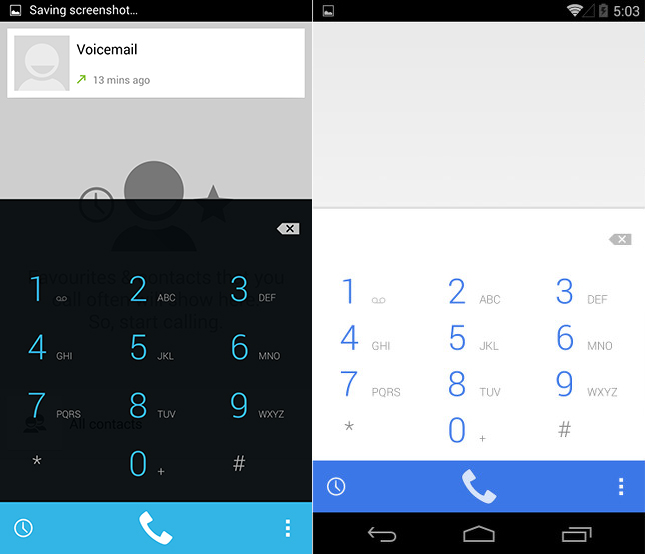



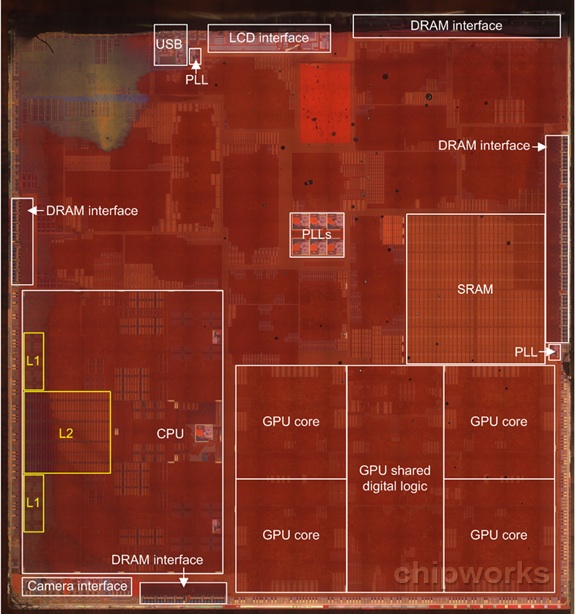



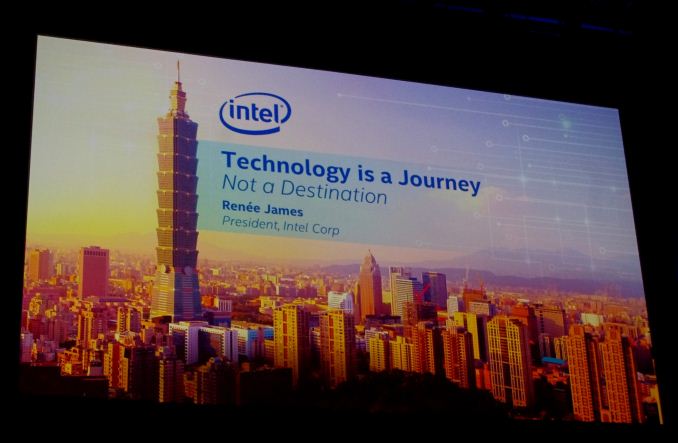




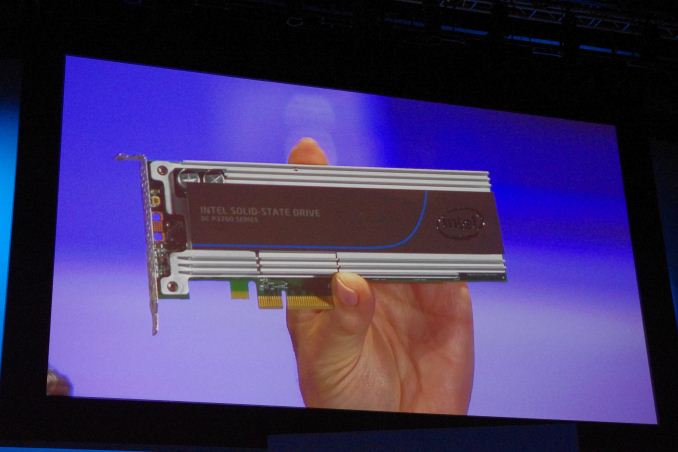
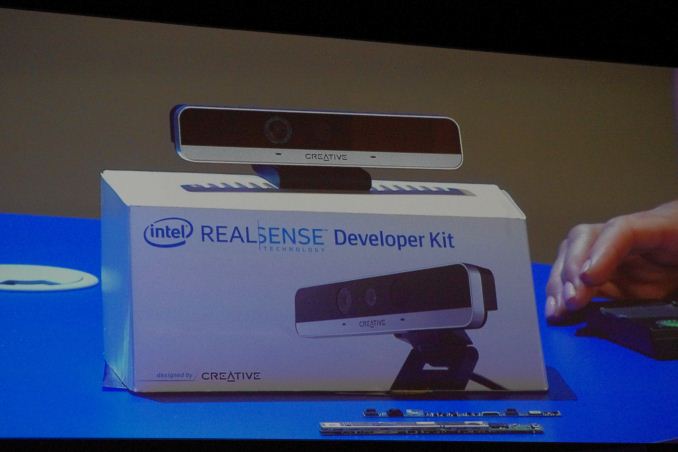












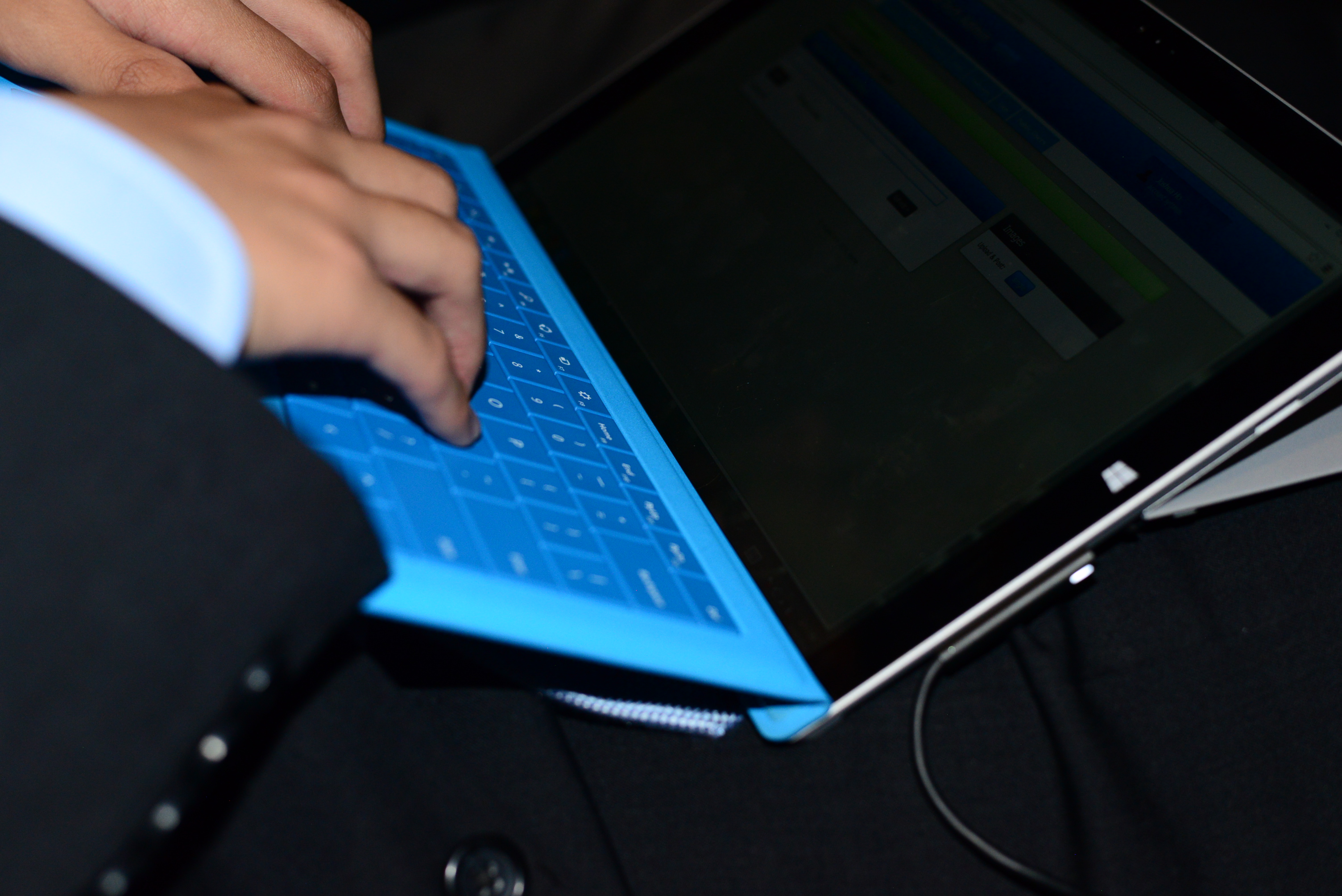
















Bookmarks